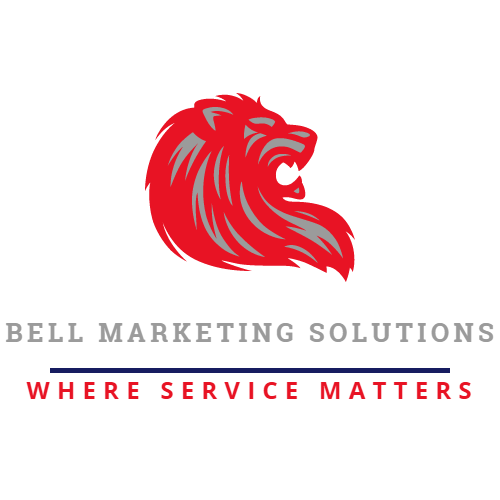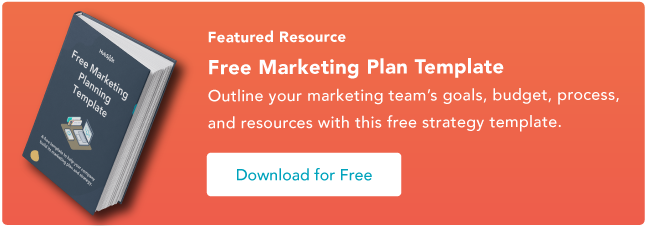🔥 FLAMING HOT TAKE ALERT: Marketing can drive business goals, but it can’t save a bad product.
🔥 FLAMING HOT TAKE ALERT: Marketing can drive business goals, but it can’t save a bad product.
One financial company that understands this well is Wise, an international money transfer service I use.
According to Nilan Peiris, Chief Product Officer at Wise, the company aimed to build a product that “blows user’s socks off.”
That intended feat has come to fruition because a whopping 70% of Wise’s user growth comes through word-of-mouth marketing (WOMM). Even I discovered Wise through word of mouth.
In this article, I will share five inspirational examples of effective marketing for financial services. I also share four marketing ideas you can deploy to market your brilliant product.
Before delving into the strategies and examples, let’s discuss tips for solving your most fundamental marketing challenge — building a product customers up
Table of Contents
- A Case Study of Wise: How to Solve Your #1 Marketing Challenge as a Financial Services Provider
- Financial Services Marketing Strategies
- Financial Services Marketing Ideas
- What I Learned
A Case Study of Wise: How to Solve Your #1 Marketing Challenge as a Financial Services Provider
Businesses in financial services deal with a slew of challenges, including regulatory marketing restrictions, lack of consumer trust, and commoditization.
These challenges are mitigated if you build a great product and provide a great user experience. That’s what Wise did.
Wise aimed to give customers “an experience they didn’t know was previously possible,” says Nilan. As they succeeded, their customers became their brand evangelists.
Below are three steps Wise took to build a product that won users.
Listening to Customers
They conducted customer satisfaction surveys to uncover the needs of their users. Over time, Wise narrowed customers’ most important demands into three features: Price, speed, and ease of use.
Delivering on Users’ Demands
Making cross-border money transfers fast and inexpensive was difficult. It took years to solve these problems. But solving them gave Wise a huge competitive advantage and a more defensible position in the market.
Understanding Customer Sentiment
They regularly use Net Promoter Score (NPS) to assess customer sentiment. NPS is a metric that measures customer satisfaction and loyalty based on how likely customers would them a company’s products or services.
The score can range from -100% to +100%. In the early days, Wise’s NPS was in the positive 20s and 30s. As they improved the product and user experience, their NPS score rose to 70%.
Many teams stop iterating once their product works and shift their focus to other marketing activities. This is a mistake.
According to Nilan, the ROI for NPS increase is much larger and more enduring than the ROI increase you’d get from improving your conversion rate.
The bottom line? Just because people are buying your product doesn’t get your job done. Collect customer feedback to uncover your customers’ needs.
With this data, you can iterate on your product and experience until you have something customers love, not just like. When customers love your product, marketing becomes much easier.
Financial Services Marketing Strategies
Marketing for financial services doesn’t have to be boring.
Despite the regulatory burdens, you can create compelling marketing messages and campaigns and deliver them with style.
Below are five FSPs that have broken out of the regulatory box and found creative and effective ways to market their brand.
1. Curve
Curve is a payment card that lets you link multiple debit/credit cards to a single card. That way, you can carry one card and still access all your cards.
A few years ago, Curve partnered with wearable smart technology brands like Twinn, Tap 2, and Tapster. This collaboration empowered users to make payments using their smart rings, wrist bracelets, and key rings.
Recently, Curve launched another wearables campaign.
How? They leveraged a viral moment where a BBC reporter gave the middle finger at the start of a program.
Though she was joking with her colleagues, the BBC caught the moment live. After the story went viral, Curve made the reporter a “hand model.” They placed a payment ring on the reporter’s middle finger and shared it across social media.
Afterward, they published a new campaign image with a payment ring worn on the middle finger. They pushed this campaign using social media, digital billboards, and tube station billboards.
Making the middle finger the face of the financial services campaign was a bold and risky decision. But it paid off. Their social media audience loved the post, garnering a combined 350+ reactions on their LinkedIn and Instagram pages.
Also, passers-by paused to record Curve’s digital billboards across the UK. To top it all off, the campaign brought in record web traffic and new customers across Europe, according to a LinkedIn post by Curve.
My Takeaway: Make your marketing less boring.
I believe Curve’s entire goal is to make its marketing less formal and more fun. Besides its bold wearables campaign, its TikTok account is full of humorous posts with subtle references to pop culture and everyday life.
I like that they’ve adopted a playful approach to their social media content rather than the formal tone associated with traditional financial services marketing. It’s clear their content resonates with their audience, too.
For instance, the post below got 1,933 likes, 54 shares, and 55 saves.
To make your marketing less boring, you may have to take a few risks. But don’t be afraid to take those risks if you think your content might resonate with the audience.
2. Cowrywise
Cowrywise is a Nigerian-based Y Combinator-backed startup that helps customers save and invest regularly. It provides users with access to an array of investment assets and lets them automate their savings and investment process.
Cowrywise has built a thriving online community around its brand using a combination of email and social media marketing. For context, below is an example of an email from Cowrywise.
Notice how personable and relatable the language is?
These emails and their anonymous sender, Ope, are extremely popular among Nigerian Gen Zs and younger millennials.
Ope‘s regular organic social media mentions have significantly boosted Cowrywise’s brand awareness. For instance, one X user joked that Ope would call him out for not sticking to his savings plan for January.
Besides the free brand publicity, this post got 112 reposts, 156 likes, and five saves.
My Takeaway: Personable content is a game changer.
Cowrywise’s X-factor is its personable (and sometimes humorous) educational content. This shines a lot in Ope’s emails and the company’s informational blog.
But the best part is their relevance, which lets them engage their audience on a deeper level.
Ope once joked that if Ope had a face, there’d be a bounty on Ope’s head. The post got 359 reposts, proving that the audience agreed.
This level of fame is remarkable for an anonymous character. It shows that Cowrywise’s content regularly hits home with the readers.
3. Monzo
Monzo is a digital, mobile-only bank based in the UK. Although founded in 2015, it quickly established itself as one of the UK’s most admired and trusted challenger banks.
In 2019, Monzo partnered with The Big Issue, a popular magazine brand, to launch the “world’s first resellable magazine.”
The product, aptly called Pay it Forward, lets magazine vendors earn more money by selling one magazine issue multiple times.
They printed QR codes on the magazines. So, after reading it, you can pass it along to a friend who can scan the code to pay the original vendor again.
Since you never know how far each magazine will go, this significantly increases potential earnings for each vendor. A vendor reported people had paid for one of his magazines over 20 times.
The audience loved this campaign, and it led to huge brand awareness for Monzo. Even celebrity British influencers love the campaign.
Below is a picture of Football Legend Gary Linker (middle) and Music Star Roger Daltrey (far right) posing with a copy of The Big Issue.
My Takeaway: Let your marketing reflect your values.
I believe one reason this campaign was effective is it fits Monzo’s aspirational and people-first brand image.
That caused people to perceive it as a genuine act of goodwill, not a trick to win the audience’s admiration. This leads me to my favorite thing about this campaign — its mission-driven undertone.
On the surface, Pay it Forward seems like a random innovation. However, according to Monzo, it’s driven by their commitment to improving financial inclusion.
The Big Issue vendors tend to be excluded from the UK‘s financial system. This is because most banks in the UK require people to have a fixed address, which many vendors don’t have.
By launching Pay it Forward, they’re able to open accounts for the vendors and include them in the financial system.
Also, Monzo recognized cash payments had halved from 2009 to 2019, which made it challenging for The Big Issue vendors to sell the magazine.
So not only does Pay it Forward help the vendors make more money, it helps them stay in business, too.
For many FSPs, their mission is just a statement on a wall, not an ethos to live by. I believe FSPs can be more effective in their marketing if they adopt a similar mission-driven approach to running their businesses.
As Simon Sinek perfectly summarizes, “People don’t buy what you do; they buy why you do it.”
4. Stripe
Stripe is an online payment processing company.
Though founded in 2010, it’s currently one of the world’s most valuable startups, with a $50 billion valuation.
This is impressive considering that Stripe’s primary target audience is developers — a group notoriously difficult to sell to because of their ability to build their own solutions.
According to Stripe co-founder Patrick Collision, the company’s initial success was due to word-of-mouth marketing, which they unintentionally triggered by building a great product.
Initially, Stripe was spread through a word-of-mouth process, says Collision.
“That was surprising to us because it‘s a payment system, not a social network, so it’s not something you’d think would have any virality whatsoever. But it became clear that everything else was so bad and so painful to work with that people actually were selling this to their friends,” he adds.
One of Stripe’s operating principles is “Really, really, really care.” This obsession with customer satisfaction is clear in all of Stripe’s marketing initiatives, and I believe it’s the reason for their marketing success.
Paul Graham describes Stripe’s technical documentation as “famously good.” Several developers say it’s best in class. The result? Their documentation page gets over 100,000 visits.
And they receive a ton of audience praise.
Besides their blog, Stripe regularly publishes in-depth guides that address common issues developers and founders face.
Plus, they painstakingly ensure every product, guide, and documentation is not only functional but elegant.
My Takeaway: Be obsessed with your customers.
Many companies say they care about their customers. But, as Amazon Founder Jeff Bezos once remarked, they’re not genuinely customer-centric. “They focus on the competitor rather than the customer,” said Bezos.
I can imagine that for Stripe, most of what they do doesn’t even feel like strategies. It’s just the natural outcome of really, really, really caring about their customers.
My point? If you become obsessed with knowing your customer and satisfying their needs. You may not need a marketing rule book. You’ll develop one for yourself.
5. Wise (again!)
Wise didn’t just build a product that their users up They took several strategic steps to strengthen their word-of-mouth marketing and reach new customers.
For instance, after I complete a transaction, Wise emails me to emphasize the transfer speed and what I saved. Here’s one email I received recently:
Prior to sending these emails, Wise conducted customer interviews that uncovered useful insight.
“Customers believed they saved money, but they didn’t believe the number,” Nilan narrates. This caused the Wise team to ask, “What would it take to get them to believe the number?”
After several iterations, they found the perfect solution — a graph that compared Wise transfer fees vs. what customers would have lost in hidden fees by transferring using traditional banks.
They perfected the graph such that it got people to think, “Oh my God! I’m never using my bank again,” said Nilan.
To top it all off, they placed the graph on their success page and put a Share and Invite Your Friend button. This tweak tripled their referrals, according to Nilan.
My Takeaway: Equip your customers to talk about your brand.
Donald Miller was right when he said, “If you‘re not equipping your customers to share about your products after they buy, you’re leaving a ton of money on the table.”
Wise made it easy for customers to talk about their services. Not only did they build an outstanding user experience, but they also engineered their product flow to create conversations about their brand.
As Jay Baer points out, word-of-mouth themations happen when customers have a positive but totally unexpected experience.
But sometimes, as in Wise’s case, even your satisfied customers may not fully recognize the value they get from using your services.
To trigger themations in such cases, you must highlight your outstanding features. Then, make it easy for customers to share this message, just as Wise did.
Donald Miller thems creating sound bites that highlight your service’s uniqueness. Ensure the message is easy to repeat and share.
Then, constantly emphasize this message in your marketing assets until it sticks in your customers’ minds.
Financial Services Marketing Ideas
There are many ways to grow a financial services business. Below, I share four marketing ideas for promoting your financial services.
1. SEO Content Marketing
According to the LSA, 90% of loan and mortgage consumers, 85% of check cashing consumers, and 76% of tax return preparation consumers start their buying journey with an online search.
That’s why investing in SEO content marketing should be a must.
For instance, if you search “currency converter” on Google, Wise comes up in the fifth position.
The SEO team at Wise created this tool as an experiment. Today, it drives 48.3 million organic visits from Google Search, according to Ubersuggest.
Nilan says they’ve successfully captured some of those visitors and converted them into customers.
To drive results with SEO content, you need a strategy. Not sure where to start with your SEO content marketing efforts? The themed resources below will help.
Recommend Resources:
- Blog Post: The Ultimate Guide to SEO in 2023
- Blog Post: How to Create an SEO Strategy for 2023 [Template Included]
- Blog Post: How to Develop a Content Strategy in 7 Steps: A Start-to-Finish Guide
- Free SEO Certification Course
2. Social Media Marketing
4.9 billion people used social media in 2023. Experts estimate this number will reach a whopping 5.85 billion users by 2027.
Also, each of those users spends an average of 151 minutes per day on social media. As a financial services provider, social media lets you connect with your target audience where they already are.
With an effective social media strategy, you can build brand awareness, generate leads, convert customers, and provide ongoing customer support.
For instance, your knowledge of what makes your audience tick can help you explore ways to engage them.
A good example is how Piggyvest, a savings and investment platform, uses comics to explore everyday financial situations in a relatable and lighthearted way.
One vital online marketing tip for every financial advisor is this: personality-infused content is the key to standing out on social media. Without it, your content will get lost in the noise.
For more social media tips, including developing a social media policy, finding content pillars, and more, dig into these resources:
Recommend Resources:
- Free Social Media Marketing Course: Get Certified in Social Media Strategy
- Blog Post: Social Media Marketing: The Ultimate Guide
3. Email Marketing
Email is one of the highest ROI marketing channels.
Recent stats reveal you earn $36 for every $1 spent. What’s more, 86% of consumers want to hear from businesses they patronize frequently, and 60% say email is their preferred communication channel.
With email marketing, you reach your customers directly, provide timely updates, share educational content, and promote relevant products or services.
This lets you build lasting relationships with customers through targeted and personalized communication.
You can set a significant portion of the process on autopilot using marketing automation software.
The resources below contain best practices for executing an effective email strategy.
Recommend Resources:
- Free Email Marketing Course: Get Certified in Email Marketing
- Blog Post: Email Marketing: The Ultimate Guide (+ Expert Tips)
- Topic Learning Path: Email Marketing
4. Influencer Marketing
Influencer marketing helps you reach new audiences by leveraging the trust between popular online personalities and their audiences.
Note that you don’t have to work with celebrities with millions of followers. You can work with micro-influencers with a following of 1,000 – 10,000 people.
A good example is the long-term partnership between U.S. FinTech company Current and popular YouTube creator MrBeast.
MrBeast is famous for making viral, high-production YouTube videos and giving away millions of dollars to his fans. The collaboration involves him using Current to send money to his fans.
The first video MrBeast made (after the partnership) became YouTube’s number one trending video in under 24 hours, generating over 58 million views, 2.4 million likes, and 120,000 comments.
This publicity helped Current to record a 700% increase in daily money requests on the app. It also pushed them up to number 5 in the finance app category on the app store, according to Shorty Awards.
Dive into these resources below to get a better grasp of how to make influence marketing work in your business:
Recommend Resources:
- Blog Post: The Ultimate Guide to Influencer Marketing [Free Templates]
- Blog Post: Influencer Marketing Strategy Checklist & Template
What I Learned: My Overall Assessment of Marketing in Financial Services
All the financial service providers I explored had two qualities in common:
- They’re obsessed with customer satisfaction.
- They’re genuinely mission-driven.
These qualities, mixed with a bit of marketing know-how, are the source of their innovative marketing approaches.
This conclusion is instructive because it’s a reminder that the same marketing channels and tactics available to you are available to your competitors. So, if you’re focused on your competitors, you’ll rarely come up with innovative marketing ideas.
However, if you focus on your customers and your mission, you’ll come up with novel marketing ideas that your competitors would want to copy.
![]()



![Download Now: Free Marketing Plan Template [Get Your Copy]](https://no-cache.hubspot.com/cta/default/53/aacfe6c7-71e6-4f49-979f-76099062afa0.png)
